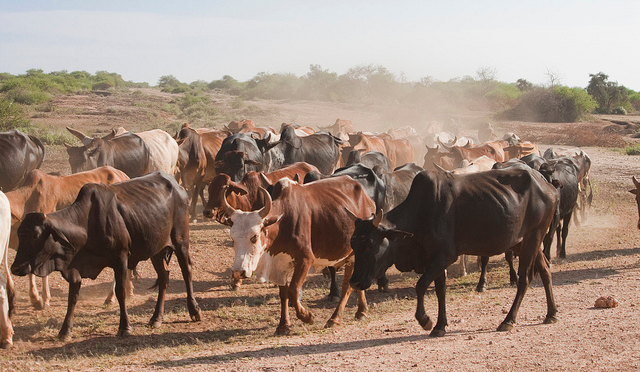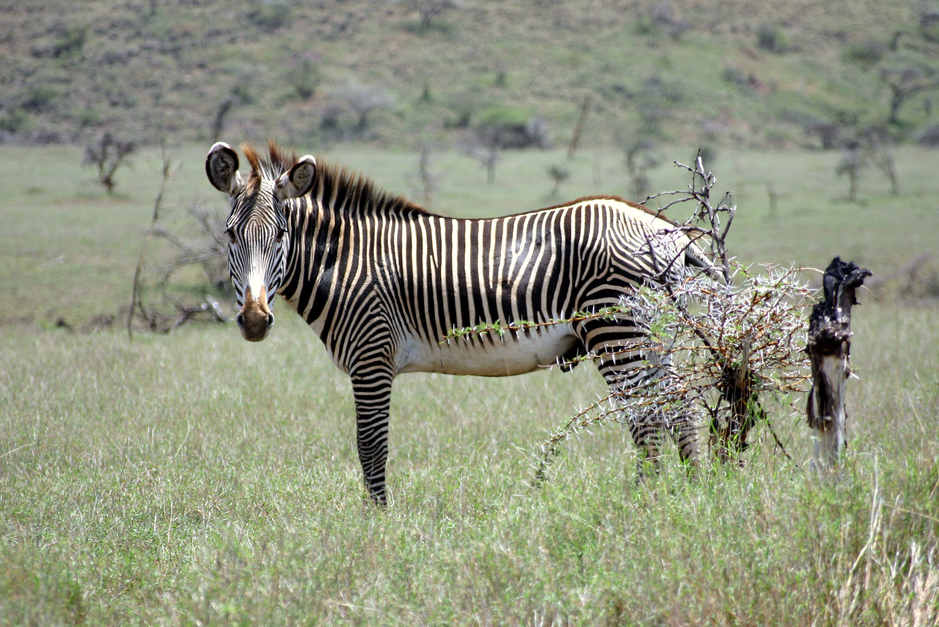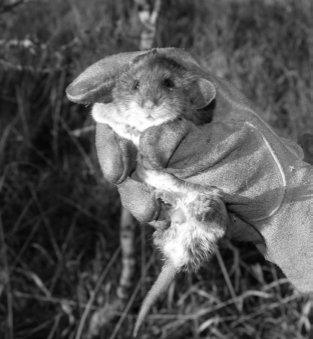Science Note—Loss of Large Grazing Mammals Alters African Savannas
Air Date: Week of July 4, 2014

Large herbivores, including elephants and giraffes, live on the Kenyan savannas (Photo: Jay Aremac; Flickr Creative Commons 2.0)
In this Note on Emerging Science, Lauren Hinkel reports on an experiment in Kenya grasslands, where researchers discovered a dramatic shift in ecosystem species when large, native herbivores were removed. This suggests better ways to manage the competition between domestic cattle, people and wildlife.
Transcript
CURWOOD: It's Living on Earth. I'm Steve Curwood. Just ahead, E.O. Wilson, one of the most celebrated evolutionary biologists is helping Mozambiqans recreate their park. But first this note on Emerging Science from Lauren Hinkel.
[SCIENCE NOTE THEME]

Cattle on a Kenyan ranch (Photo: Luca Esposti; Flickr Creative Commons 2.0)
HINKEL: When the elephant’s away, the mice will play—at least that’s what researchers from Bard College and UC Davis found in the Kenyan grasslands.
African savannas are among the most productive ecosystems on earth—home to abundant wildlife from large grazing mammals like giraffes and elephants, to small species like mice and snakes. But ranchers also covet the grasslands for cattle, and domestic herds are increasingly displacing native species.
The researchers designed a long-term experiment on Kenya’s Laikipia plateau to assess how the removal of large, native herbivores affected the savanna ecosystem.

Grazing Grevy’s Zebra (Photo: Kevin Walsh; Flickr Creative Commons 2.0)
They set up eighteen plots of land enclosed by electric fences at varied heights, which allowed different combinations of cattle and wildlife to interact. For over 15 years, the researchers tracked all the wildlife on each plot, from zebras and insects to the savanna’s only species of tree—the whistling thorn.

The northern pouched mouse (Saccostomus mearnsi) is the dominant small mammal in the savanna habitat of central Kenya, where the Kenya Long-term Exclosure Experiment is located. These mice represented 85% of the small mammals captured over 11 years. (Photo: Felicia Keesing)
They saw a profound ecosystem shift on the plots that lacked large grazing mammals, and consequently grew longer grass. Most notably, a rodent called the pouched mouse thrived, and brought with it parasites and predators: fleas, ticks and venomous snakes. The researchers speculated that these creatures would bite more people and animals, increasing medical problems and disease in the region. Also, the growing mouse population voraciously consumed whistling thorn seedlings. This impacted the whole ecosystem, as the trees provided food and shade for herbivores, hiding places for predators and fuel for people.
Though the loss of large grazing mammals caused unexpected consequences, researchers are optimistic that now they understand the effects, careful land management of the savannas can strike a balance so that both cattle and wildlife can have their grass and eat it too.
That’s this week’s note on emerging science. I’m Lauren Hinkel.
Links
Read more about the Kenya Long-term Enclosure Experiment (KLEE)
Living on Earth wants to hear from you!
Living on Earth
62 Calef Highway, Suite 212
Lee, NH 03861
Telephone: 617-287-4121
E-mail: comments@loe.org
Newsletter [Click here]
Donate to Living on Earth!
Living on Earth is an independent media program and relies entirely on contributions from listeners and institutions supporting public service. Please donate now to preserve an independent environmental voice.
NewsletterLiving on Earth offers a weekly delivery of the show's rundown to your mailbox. Sign up for our newsletter today!
 Sailors For The Sea: Be the change you want to sea.
Sailors For The Sea: Be the change you want to sea.
 The Grantham Foundation for the Protection of the Environment: Committed to protecting and improving the health of the global environment.
The Grantham Foundation for the Protection of the Environment: Committed to protecting and improving the health of the global environment.
 Contribute to Living on Earth and receive, as our gift to you, an archival print of one of Mark Seth Lender's extraordinary wildlife photographs. Follow the link to see Mark's current collection of photographs.
Contribute to Living on Earth and receive, as our gift to you, an archival print of one of Mark Seth Lender's extraordinary wildlife photographs. Follow the link to see Mark's current collection of photographs.
 Buy a signed copy of Mark Seth Lender's book Smeagull the Seagull & support Living on Earth
Buy a signed copy of Mark Seth Lender's book Smeagull the Seagull & support Living on Earth

